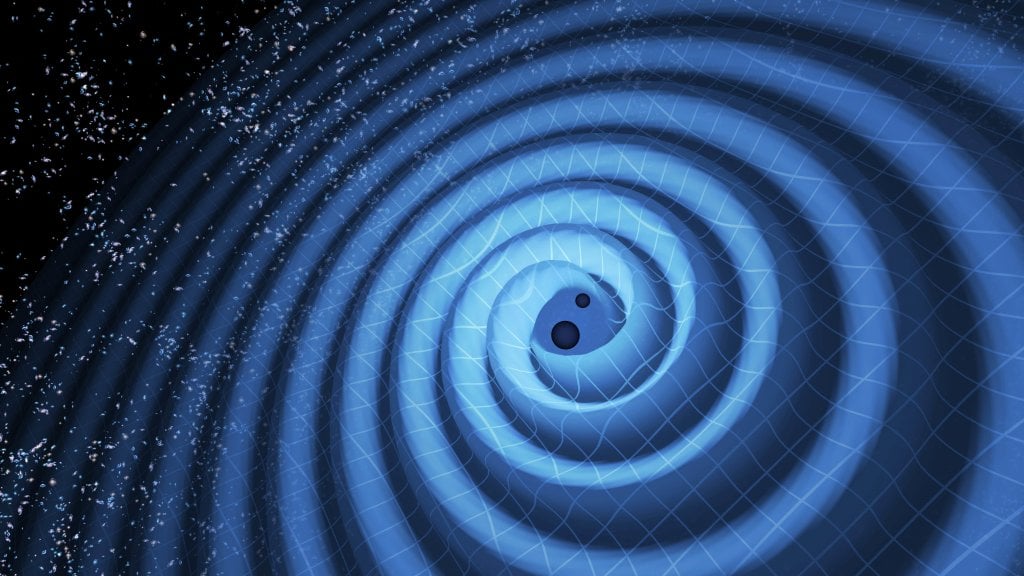Cosmologists have long hypothesized that the conditions of the early universe could have caused the formation of black holes not long after the Big Bang. These 'primordial black holes' have a much wider mass range than those that formed in the later universe from the death of stars, with some even condensed to the width of a single atom.
No primordial black holes have yet been observed. If they exist, they might be an explanation for at least some of the 'dark matter' in the universe: matter that does not appear to interact with normal matter through electromagnetism, but does affect the gravitational dynamics of galaxies and other objects in the universe.
Now, we might have a new way to detect primordial black holes, although in a severely limited form.
This method comes via gravitational waves.
First detected in 2015 by the LIGO gravitational wave observatory, gravitational waves are 'ripples' in spacetime caused by dramatic events in the universe – most often the collision of giant objects like stellar mass black holes and neutron stars. About 90 confirmed gravitational wave sources have been found by the LIGO-Virgo-KAGRA (LKV) program since 2015.
In a research note published this month, Harvard astrophysicist Avi Loeb examined whether the LKV detectors could catch the signature of primordial black holes – specifically those racing by near the speed of light – or other similar objects moving at high speeds.
"All gravitational wave sources detected sofar involve mergers of stellar-mass astrophysical objects, such as black holes or neutron stars, at cosmological distances," wrote Loeb in a Medium post in August. But these are not the only possible sources.
"Imagine a relativistic object moving near the speed of light within a distance from LIGO that is comparable to the radius of the Earth. At closest approach, such an object would generate a gravitational signal," one heavily dependant on its mass and the speed at which it is moving, says Loeb.
With LKV's current capabilities, the detectors would be able to see any objects moving near to the speed of light with a mass of 100 megatons (the mass of a smallish asteroid several hundred meters across), but only if it came within half the Earth's diameter of the detectors.
In other words, the LKV detectors would have noticed if an object of this mass passed through the Earth, or very near its surface, in the decade since 2015, if it was traveling at very high speeds.
Of course, if an asteroid of that mass hit Earth at that speed, we'd be well aware of it from the devastating impact. As such, this capability is really of interest particularly for compact objects like primordial black holes, with diameters the size of an atom or smaller, that might pass nearby or even through the Earth without anyone noticing.
No such object has been seen by the LKV detectors.
It is not a surprising result, given that this is a very limited detection capability. It doesn't tell us about objects further than ~6000 kilometers from Earth's surface, and also fails to detect slower moving objects.
Future gravitational wave detectors, like ESA's LISA detector, expected to launch next decade, will expand this range, though not by a lot.
Still, when you are seeking answers to some of the hardest questions in the universe, it's worth checking where you can. This particular stone hasn't been left unturned.
Read the Research Note in RNASS here.
 Universe Today
Universe Today

